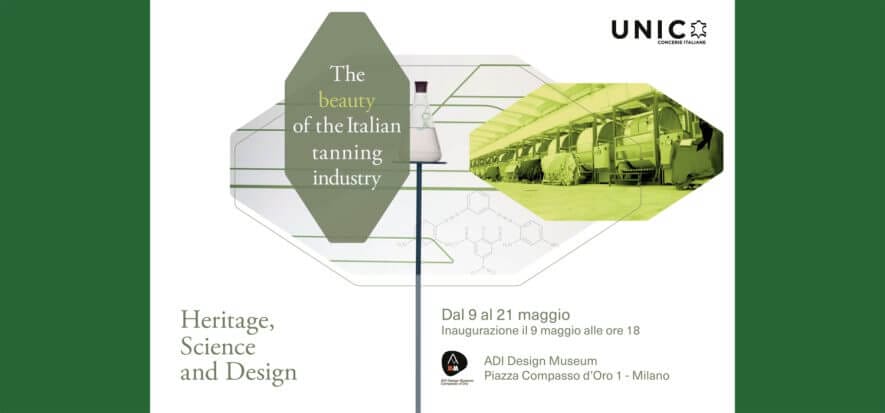Save the date: Milan, from 9 to 21 May, in the spaces of the ADI Design Museum. The reason for this save the date should be highlighted in red: on those days it will be possible to visit the exhibition The Beauty of the Italian Tanning Industry (Heritage, Science And Design). The exhibition promoted by UNIC – Italian Tanneries, therefore, leaves Lineapelle (where it celebrated its debut in September 2022) and opens up to the world. After Milan, further exhibitions are planned in some international cities. Objective: to tell and demonstrate the green beauty of the Italian tannery.
The green beauty of the Italian tannery
This exhibition, says a note, “retraces with a didactic and at the same time emotional approach the path of leather from when it enters, raw or semi-finished, into an Italian tannery and comes out transformed into a material with very high added value and incredible productive, stylistic, sustainable, futuristic excellence”. The objective “is to communicate the beauty of a production model to an absolutely transversal target”. A model “that combines tradition and craftsmanship, science and technology, creativity and design”. It will do so by “recounting every aspect of the leather product, its production cycle and its constantly improving green approach in a stimulating and new way”.
Bringing clarity
“The Beauty of the Italian Tanning Industry,” comments Fulvia Bacchi, General Manager of UNIC, “is a project that confronts the public with the possibility of shedding light on the most beautiful leather in the world and those who produce it: the Italian tanning industry”. Designed by Navone Associati, “the exhibition physically winds its way through the tanning process. It reveals the chemical, technological and innovative details of its various phases and how its waste is processed.
Thus, an awareness emerges of how leather and the recovery of its process and product waste represent a historical and constantly evolving example of circularity”. For example, the latter “are present in jellies used in the food, pharmaceutical and cosmetic industries; in bio-stimulants and fertilisers that strengthen agriculture”. But also in musical instruments, console games and sports equipment. Circular virtues for a product, leather, and an industry, the Italian tanning industry, that live on innovation and responsibility.
Read also:











